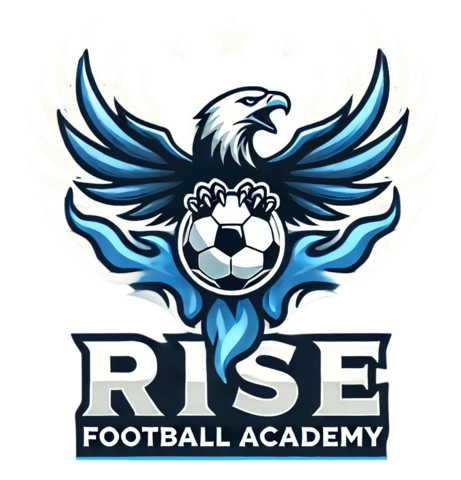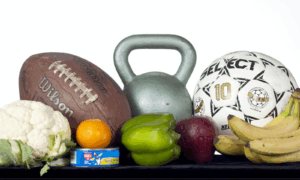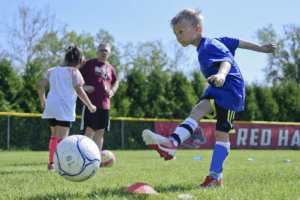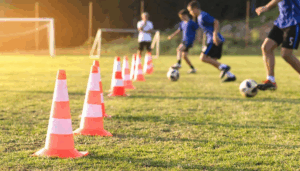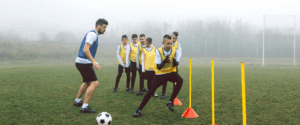When most people think of youth soccer, they picture practices filled with scrimmages and passing drills. But to truly help kids develop as complete athletes, football fitness training needs to be part of the game plan.
At Rise Football Academy, we know the science of movement matters just as much as mastering technique. If you’re only focusing on skill work and skipping conditioning, you’re missing a huge piece of the puzzle.
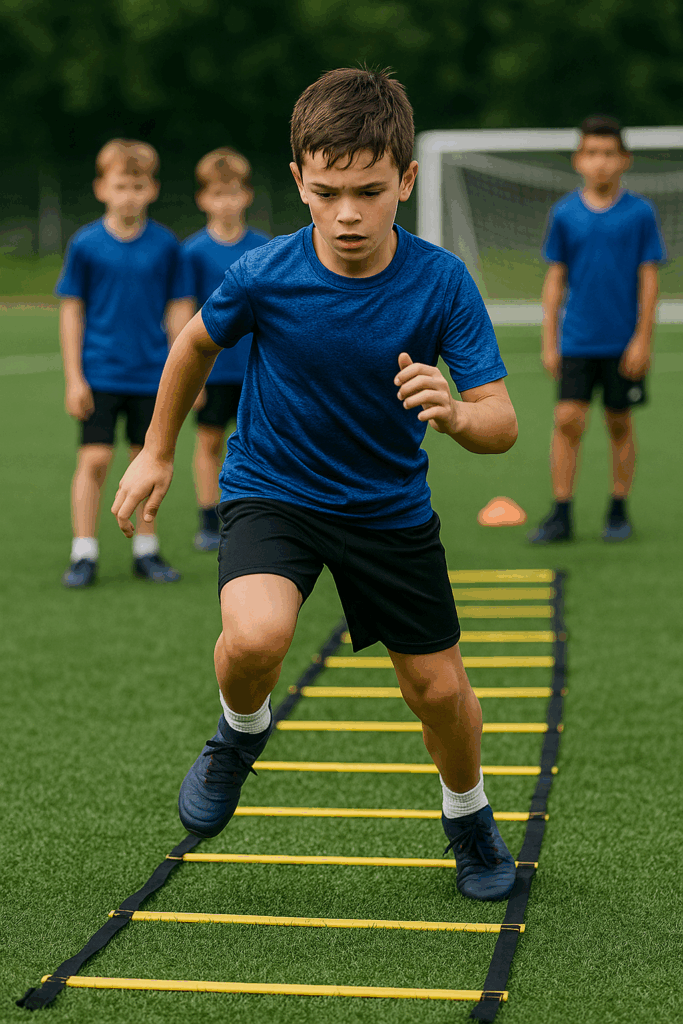
Let’s break down why football fitness training is essential for young players – and how it builds strong, agile, and injury-resistant athletes.
Why Fitness Is More Than Running Laps
Gone are the days when coaches used endless laps as a one-size-fits-all workout. Today, youth athletic conditioning focuses on movement quality, injury prevention, and age-appropriate physical development.
When done right, football fitness training supports:
- Injury prevention by building joint stability and muscle balance
- Speed and acceleration through sprint mechanics and plyometrics
- Game endurance so players stay sharp in the final minutes
- Core strength and coordination for better agility and ball control
Kids aren’t mini adults. Their bodies need smart, progressive training that works with their natural growth – not against it.
Types of Drills That Build Athleticism
At Rise, we incorporate fun and focused drills into every training week – not just to tire players out, but to build them up from the ground up.
Here are a few types of drills we use:
1. Agility Ladders
These aren’t just flashy footwork routines. Ladder drills train coordination, quick feet, and change-of-direction reflexes that are crucial for football.
2. Speed Drills
Short sprints, cone accelerations, and resisted runs help kids improve reaction time and breakaway speed.
3. Soccer Strength Training
We use bodyweight circuits (like squats, lunges, and core holds) to teach control, reduce injury risk, and create a strong foundation – especially for growing athletes.
4. Balance and Stability Work
Simple exercises using cones or single-leg holds help younger players learn how to control their bodies under pressure.
5. Conditioning Games
Instead of basic running, we integrate ball work into conditioning so players stay engaged while building stamina.
These exercises are woven into every session – not tacked on at the end. That’s what makes it sustainable and effective.
How Rise Coaches Integrate Fitness Into Weekly Sessions
Our approach to football fitness training is guided by science, tailored by experience, and delivered in a way that kids enjoy.
Here’s how we do it at Rise Football Academy:
- Dynamic Warm-Ups: We start every session with activation drills to prep muscles and joints.
- Integrated Movement Blocks: Whether it’s agility ladders, speed drills, or soccer strength training, we blend athletic development into technical sessions.
- Position-Specific Conditioning: A center back and a winger don’t move the same. We design drills that reflect real match demands.
- Seasonal Periodization: Training intensity ramps up or pulls back based on the season (in-season, off-season, pre-season). This keeps players progressing without overtraining.
Most importantly, we make it fun. Kids learn best when they’re engaged, challenged, and celebrated for their effort—not just their end results.
Final Whistle: Stronger Players, Smarter Training
Football fitness training is about more than stamina – it’s about building better movers, preventing injuries, and preparing kids for long-term success in sport.
Whether your child is just starting out or playing competitively, the right blend of skill and fitness matters. At Rise, we combine top-tier coaching with modern youth athletic conditioning to support each player’s physical and mental growth.
Because when you build the body and the brain together, great things happen on the pitch – and beyond it.
